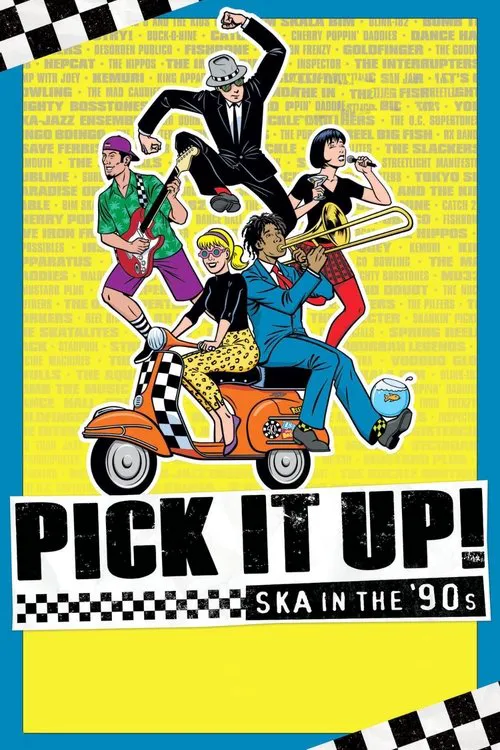Pick It Up!: Ska in the '90s

Plot
In the mid-to-late 1980s, the world of music witnessed the resurgence of a genre that had been largely dormant since the late 1970s - ska. Originating in Jamaica, ska evolved from traditional Caribbean mento and calypso music, eventually transforming into rocksteady in the 1960s. It was the American ska movement, however, that took shape in the late 1970s and early 1980s. A subgenre called 2 Tone emerged, characterized by its fast-paced rhythm and punk-infused spirit, spearheaded by bands like The Specials and Madness. As the 1980s drew to a close, the American underground began to take notice of this energetic and lively sound. Bands such as Fishbone, Rancid, and The Mighty Mighty Bosstones were among the key players in the burgeoning ska scene. With influences ranging from reggae to punk, these bands not only rekindled interest in the genre but also began to shape its unique American identity. By the early 1990s, the sound of 2 Tone had started to seep into the mainstream. The release of No Doubt's 1992 album 'No Doubt' marked a turning point for the genre, as the band's self-produced debut included the hit single 'Dog House,' a ska-infused track that demonstrated their ability to merge ska punk with pop sensibilities. As the popularity of ska continued to grow, so did its commercial viability. Reel Big Fish, known for their witty, horn-driven melodies and high-energy live performances, quickly rose through the ranks of the emerging ska scene. Their debut album 'Sell Out' (1996), featuring hits like 'Sell Out' and 'She Has a Girlfriend, Wait What?', became a defining document of the era, exemplifying the genre's blend of humor, catchiness, and sonic experimentation. Similarly, The Mighty Mighty Bosstones released their fifth album 'Let's Face It' in 1997, which became a breakthrough success, reaching Gold status. The album's lead single 'The Rascal King' featured a mix of catchy hooks, driving guitar riffs, and an infectious horn section, cementing the band's reputation as one of the leading ska bands of the era. Meanwhile, bands like Goldfinger were taking the commercial route, blending ska with pop-punk and achieving mainstream success in 1996 with their single 'Here in Your Bedroom.' The track's music video, featuring the band performing in a high school setting, further solidified their appeal to a wider audience. The success of these bands not only brought attention to the ska genre but also paved the way for further commercial exploration. Sublime, with their fusion of ska, rock, and reggae, released '40oz. to Freedom' in 1992, followed by the 1996 album 'Robbin' the Hood.' Although they maintained a somewhat underground following, their unique sound and laid-back California vibe helped bridge the gap between the mainstream and the underground ska scenes. However, it was the 1994 album 'Dookie' by Green Day that marked a significant turning point for the ska genre. The band's breakthrough success, which drew heavily from American punk and pop-punk influences, ultimately led to the proliferation of a more aggressive, pop-infused sound - one that would come to define the late 1990s. As the music landscape shifted toward a more aggressive, commercially driven sound, the ska scene began to fragment and lose momentum. Many bands, including Save Ferris, No Doubt, and Hepcat, who had ridden the popularity wave, ultimately succumbed to commercial pressures and the lure of mainstream success. The rise of pop-punk and nu-metal bands like Blink-182, Sum 41, and Limp Bizkit, further solidified the commercial viability of guitar-driven, pop-infused sounds. As a result, the once-thriving underground ska scene, which had taken shape in the early 1990s, began to dwindle. Many of the bands that had defined the era either broke up or shifted their sound to conform to the changing musical landscape. Pick It Up!: Ska in the '90s serves as a poignant reminder of a lost era, honoring the musicians and bands that risked everything to bring ska into the mainstream. Despite its eventual descent into obscurity, the ska revival of the 1990s laid the groundwork for future generations of bands and fans to experiment with the genre. As we reflect on this era, we are reminded that the passion, creativity, and energy that drove the ska movement continue to shape the music landscape today, inspiring new waves of artists to push the boundaries of sound and reinvent the genre for a new generation.
Reviews
Recommendations



